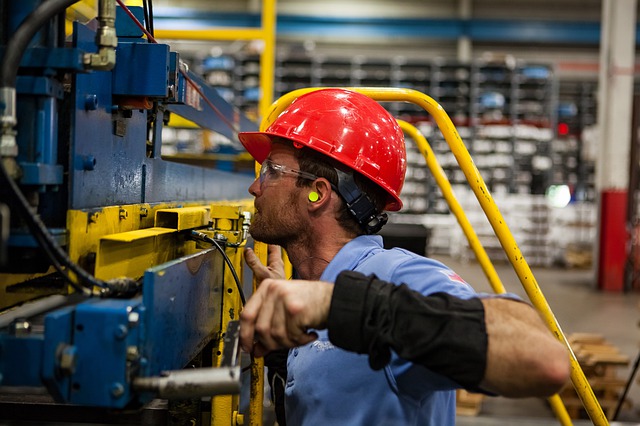- April 28, 2021
- Posted by: David Marshall
- Category: Management, Manufacturing

The COVID-19 pandemic certainly brought the world to a crashing halt, especially manufacturers. Companies that continued working were either considered essential manufacturers or they had pivoted and were making things like ventilators.
We weren’t able to start working from home or working remotely. We had to be onsite, working in wide-open spaces, and trying to save our companies while navigating a struggling supply chain and meeting customer demands.
Some companies scaled back, others leaped into the fray. Some used this as a time to upgrade and improve their machines, others held on and hoped for the best.
I recently saw an article about how the pandemic made manufacturing stronger, and some of the points the writer made gave me something to think about.
These are a few lessons all manufacturers should have learned during the pandemic.
1. Adaptability ensures business resilience
The companies that survived the pandemic were most likely the ones best able to adapt. Of course, the 3D printing and additive manufacturers were able to adapt the most easily, pivoting and making new products within 1 – 2 days, such as the companies that were 3D printing face shields. For some, it was just a matter of downloading certain specs and drawings from the Internet and going to work.
Some companies needed to retool and retrain their entire workforce, such as when automakers started making hospital ventilators or when garment companies started making face masks. and hospital uniforms.
Some of these companies had to completely shift their way of thinking, their engineering, and the function of their machines. It may have also meant working with new partners.
As writer Eileen Sweeney said in her article,
For example, one of our Aerospace & Defense clients pivoted to create respirators but did not have the right distribution system to get them to hospitals and medical facilities. By partnering with a healthcare distribution and logistics company, they were able to quickly provide those much-needed supplies to surrounding hospitals.
The companies that were able to adapt were the ones that are still going today, and are probably in a stronger place than they were 15 months ago.
2. Reducing supply chain risk is ALWAYS a top priority for manufacturers
Disruptions to the supply chain are always a risk manufacturers face, even in the best of times. That means having a roster of secondary suppliers is important — that’s a given for business continuity and disaster recovery plans.
 We found out quickly how strong our supply chain was when suppliers and OEMs were shutting down or slowing production in 2020. It didn’t help that a lot of shipping borders were shut down either, which meant delays in getting OEM parts from overseas.
We found out quickly how strong our supply chain was when suppliers and OEMs were shutting down or slowing production in 2020. It didn’t help that a lot of shipping borders were shut down either, which meant delays in getting OEM parts from overseas.
As a way to avoid further disruptions, manufacturers now are not only lining up secondary and tertiary suppliers, they’re looking at ways of creating their most important components themselves. They’re partnering with 3D printing manufacturers or buying their own industrial 3D printers. They’re analyzing their data and looking at their past performance to make their future decisions.
3. Safety became more important than ever
I’ve always stressed the importance of safety, making it my top non-negotiable.
Safety before the pandemic referred to wearing your PPE, following plant safety rules, and receiving regular safety training. Now it also refers to mask-wearing and social distancing. And while it may seem like a tough sell to get some of your associates to wear face masks, remind them that they’re employed at your willingness to keep them. If you work in an “at-will” state, you can set all the rules and get rid of the people who choose not to obey them.
Of course, you can also relax the rules based on whether people have been vaccinated or already had COVID, but you should remember that the pandemic protocols we had were for everyone’s safety. And if safety is already a top priority, then your associates need to understand that the pandemic protocols are part of your safety rules and requirements as well.
We’re certainly not out of the woods yet. There are still some issues to deal with surrounding the pandemic, including getting everyone vaccinated and getting business back into operation as the economy opens back up.
As manufacturers, we can take steps to ensure our associates are still safe, we find new partners for our supply chain, and we find other ways to adapt to future hardships. If we’ve learned anything over the last 15 months, it’s that we need to put our own people first, keep them safe, and to be adaptable enough to keep them working.
I’ve been a manufacturing executive, as well as a sales and marketing professional, for a few decades. Now I help companies turn around their own business, including pivoting within their industry. If you would like more information, please visit my website and connect with me on Twitter, Facebook, or LinkedIn.
Photo credit: Jotoler (Pixabay, Creative Commons 0)

